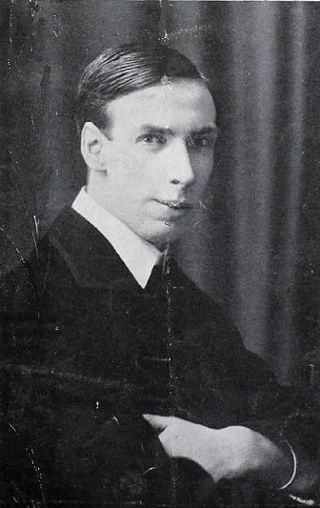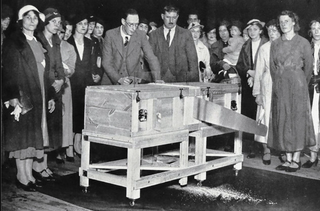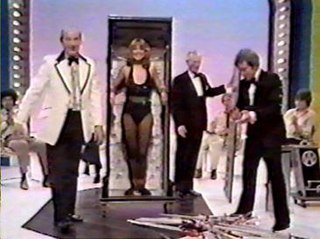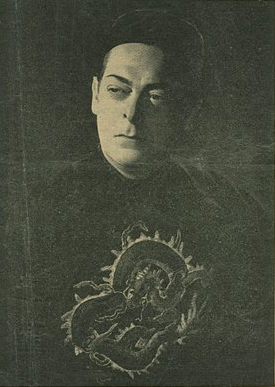History and critiques

Assistants have been part of magic shows for most of the recorded history of magic as a performance art. Despite their often crucial role in magic acts they, and the work they do, have suffered from negative public perceptions. The assistant's role has often been stereotyped as consisting of menial tasks and having the primary purpose of adding a visually aesthetic element to an act. This is associated with the perception that assistants are usually female and often dressed in revealing costumes. Although there have been plenty of instances of male assistants throughout the history of magic, the glamorous female stereotype has made a particular impact because female assistants were a prominent feature of illusion shows during the 20th century, when magic began to reach huge new audiences, first through the burgeoning of live vaudeville and variety shows and then through television. The glamorous female assistant has become an iconic image that continues in modern media and literature. [1] [2]
A notable feature of the glamorous female assistant iconography is the frequency with which assistants play the role of "victim" in illusions where they are tied up, apparently cut with blades, penetrated with spikes or swords or otherwise tortured or imperilled. Examples include Aztec Lady , Devil's Torture Chamber , Mismade Girl , Radium Girl , Zig Zag Girl , and, perhaps most famous of all, Sawing a woman in half . [1] [3] Noted illusion designer and historian Jim Steinmeyer has identified the advent of the sawing illusion as a turning point in magic history and a moment which, more than any other, marks the origin of the cliche of the female assistant as victim. It is generally agreed that a "sawing" type illusion was first performed publicly by P. T. Selbit in January 1921. His presentations of what he titled "Sawing through a woman" made an enormous impact and greatly affected public expectations of stage magic for decades afterwards. Steinmeyer has explained: [4]
Before Selbit's illusion, it was not a cliche that pretty ladies were teased and tortured by magicians. Since the days of Robert-Houdin, both men and women were used as the subjects for magic illusions. Victorian gowns often made it unrealistic for a lady to take part in an illusion or be pressed into a tight space. [5]

One female magician Dorothy Dietrich has turned the tables and used men as assistants, sawing them in half.
Changes in fashion and great social upheavals during the first decades of the 20th century made Selbit's choice of "victim" both practical and popular. Steinmeyer notes: "During the 1900s, as a shapely leg became not only acceptable on the stage but admired, it was fashionable to perform magic with a cast of attractive ladies". [5]
That was only part of the story, however. The trauma of war had helped to desensitize the public to violence and the emancipation of women had changed attitudes to them. Audiences were also tiring of the gentler forms of magic represented by the likes of John Nevil Maskelyne. It took something more shocking, such as the horrific productions of the Grand Guignol theatre, to cause a sensation in this age. Steinmeyer concludes that: "...beyond practical concerns, the image of the woman in peril became a specific fashion in entertainment". [5]
In contrast to the publicity given to Selbit, the names of the assistants who made this influential act work have received almost no publicity. There were two premieres of the illusion. Selbit first presented it to an audience in December 1920; however, on that occasion the spectators were a small group of invited theatrical agents and promoters who Selbit hoped would book the act. The public premiere then occurred on 17 January 1921 at the Finsbury Park Empire music hall after Selbit was hired by the Moss Empire group. According to Steinmeyer, the assistant at the 1920 preview was Jan Glenrose, Selbit's main assistant at that time. The public performances featured principal assistant Betty Barker. [4] [6]
Many of these illusions, together with others that involve appearances, disappearances or escapes, involve assistants being shut in boxes of one sort or another. This has led to the nickname "box jumper" which, although it could be applied to a male assistant, is usually inferred to be a female assistant. [7] [8] One reason that has been given for the predominance of women in this role is that the illusions sometimes require an assistant that can fit into cramped spaces and women have an advantage in that they tend to be smaller and more limber than men. [1] [5]
Feminist critics have taken the above aspects of illusions and performances as evidence to support claims that magic is misogynistic, but this view has been contested by some magicians and assistants. However, a few prominent assistants have stated that they deserve better recognition for their efforts and achievements (see "Documentaries" below). [1]
Some modern magic acts have preserved the glamorous elements of the female assistant iconography while attempting to give full recognition to female performers by billing women as equal partners in acts. A notable example was the husband and wife act The Pendragons, for which Charlotte Pendragon wore very revealing costumes and did traditional "box jumping" roles yet received equal billing with her husband. She was also honored in her own right as a top professional magician. Another example, although with more modest and conservative costuming, is Kristen Johnson, who receives equal billing with her husband Kevin Ridgeway when they perform together as a magic act and often stars in her own right as an escape artist.












